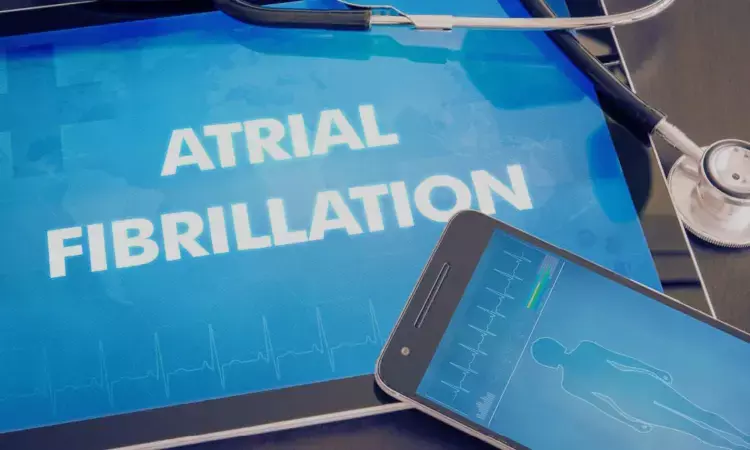- Home
- Medical news & Guidelines
- Anesthesiology
- Cardiology and CTVS
- Critical Care
- Dentistry
- Dermatology
- Diabetes and Endocrinology
- ENT
- Gastroenterology
- Medicine
- Nephrology
- Neurology
- Obstretics-Gynaecology
- Oncology
- Ophthalmology
- Orthopaedics
- Pediatrics-Neonatology
- Psychiatry
- Pulmonology
- Radiology
- Surgery
- Urology
- Laboratory Medicine
- Diet
- Nursing
- Paramedical
- Physiotherapy
- Health news
- Fact Check
- Bone Health Fact Check
- Brain Health Fact Check
- Cancer Related Fact Check
- Child Care Fact Check
- Dental and oral health fact check
- Diabetes and metabolic health fact check
- Diet and Nutrition Fact Check
- Eye and ENT Care Fact Check
- Fitness fact check
- Gut health fact check
- Heart health fact check
- Kidney health fact check
- Medical education fact check
- Men's health fact check
- Respiratory fact check
- Skin and hair care fact check
- Vaccine and Immunization fact check
- Women's health fact check
- AYUSH
- State News
- Andaman and Nicobar Islands
- Andhra Pradesh
- Arunachal Pradesh
- Assam
- Bihar
- Chandigarh
- Chattisgarh
- Dadra and Nagar Haveli
- Daman and Diu
- Delhi
- Goa
- Gujarat
- Haryana
- Himachal Pradesh
- Jammu & Kashmir
- Jharkhand
- Karnataka
- Kerala
- Ladakh
- Lakshadweep
- Madhya Pradesh
- Maharashtra
- Manipur
- Meghalaya
- Mizoram
- Nagaland
- Odisha
- Puducherry
- Punjab
- Rajasthan
- Sikkim
- Tamil Nadu
- Telangana
- Tripura
- Uttar Pradesh
- Uttrakhand
- West Bengal
- Medical Education
- Industry
Edoxaban as good as Apixaban for VTE prevention in elderly with nonvalvular AF: Study

In a recent study that could influence the management of nonvalvular atrial fibrillation among the elderly, recent outcomes unveiled the comparative effectiveness and safety of edoxaban against apixaban. This research was carried out using data from the United Kingdom Clinical Practice Research Datalink spanning from 2015 to 2021.
Nonvalvular atrial fibrillation is a common heart rhythm irregularity that increases the risk of stroke and systemic embolism in the elderly. Anticoagulants like edoxaban and apixaban were prescribed to reduce these risks. However, the relative benefits and risks of these medications in patients above 80 years had not been thoroughly compared until now.
This meticulous analysis encompassed a total of 7,251 new users of edoxaban and a total of 39,991 users of apixaban. The advanced statistical techniques including the propensity score fine stratification and the weighting were adjusted for potential confounders that ensure the reliability of the results.
The primary outcomes of interest were the incidence of ischemic stroke, transient ischemic attack, systemic embolism and major bleeding events. The secondary outcomes included all-cause mortality and a composite outcome that covered both thromboembolic events and major bleeding incidents like the gastrointestinal and intracranial hemorrhages.
The outcomes of this study indicate that both edoxaban and apixaban express similar effectiveness in preventing thromboembolic events, with adjusted incidence rates of 20.38 and 19.22 per 1,000 person-years, respectively. However, a marked difference was observed in the safety profile of the two drugs. Edoxaban users experienced a significantly increased rate of major bleeding events when compared to the individuals on apixaban, with adjusted rates of 45.57 versus 31.21 per 1000 person-years. This translated to a 42% elevated risk associated with edoxaban.
Also, this comprehensive study noticed a 21% higher risk for the composite outcome of serious adverse events in patients who were taking edoxaban. Despite these differences in safety, the risk of all-cause mortality remained similar between the two groups. While both medications offered comparable effectiveness in preventing thromboembolic events, the increased risk of major bleeding with edoxaban cannot be overlooked. Overall, this study underlines the importance of individualized patient care and the need for careful consideration when prescribing anticoagulants to the very elderly who are vulnerable to the adverse effects of these medications.
Reference:
Chiv, R., Beradid, S., Suissa, S., & Renoux, C. (2024). Effectiveness and Safety of Edoxaban Compared With Apixaban in Elderly Patients With Nonvalvular Atrial Fibrillation: A Real-World Population-Based Cohort Study. In Stroke. Ovid Technologies (Wolters Kluwer Health). https://doi.org/10.1161/strokeaha.123.045098
Neuroscience Masters graduate
Jacinthlyn Sylvia, a Neuroscience Master's graduate from Chennai has worked extensively in deciphering the neurobiology of cognition and motor control in aging. She also has spread-out exposure to Neurosurgery from her Bachelor’s. She is currently involved in active Neuro-Oncology research. She is an upcoming neuroscientist with a fiery passion for writing. Her news cover at Medical Dialogues feature recent discoveries and updates from the healthcare and biomedical research fields. She can be reached at editorial@medicaldialogues.in
Dr Kamal Kant Kohli-MBBS, DTCD- a chest specialist with more than 30 years of practice and a flair for writing clinical articles, Dr Kamal Kant Kohli joined Medical Dialogues as a Chief Editor of Medical News. Besides writing articles, as an editor, he proofreads and verifies all the medical content published on Medical Dialogues including those coming from journals, studies,medical conferences,guidelines etc. Email: drkohli@medicaldialogues.in. Contact no. 011-43720751


